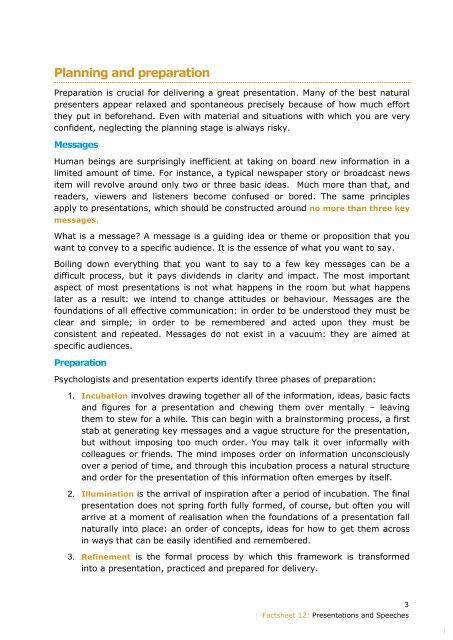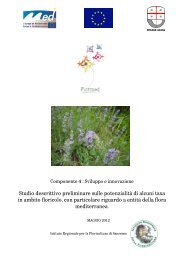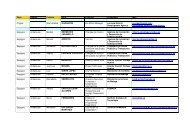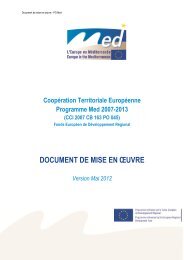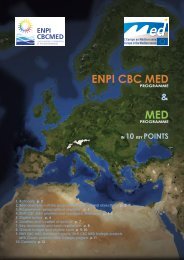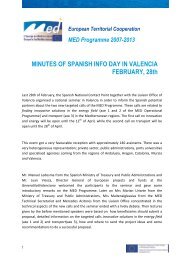MED Communication Handbook - Programme Med
MED Communication Handbook - Programme Med
MED Communication Handbook - Programme Med
You also want an ePaper? Increase the reach of your titles
YUMPU automatically turns print PDFs into web optimized ePapers that Google loves.
Planning and preparation<br />
Preparation is crucial for delivering a great presentation. Many of the best natural<br />
presenters appear relaxed and spontaneous precisely because of how much effort<br />
they put in beforehand. Even with material and situations with which you are very<br />
confident, neglecting the planning stage is always risky.<br />
Messages<br />
Human beings are surprisingly inefficient at taking on board new information in a<br />
limited amount of time. For instance, a typical newspaper story or broadcast news<br />
item will revolve around only two or three basic ideas. Much more than that, and<br />
readers, viewers and listeners become confused or bored. The same principles<br />
apply to presentations, which should be constructed around no more than three key<br />
messages.<br />
What is a message? A message is a guiding idea or theme or proposition that you<br />
want to convey to a specific audience. It is the essence of what you want to say.<br />
Boiling down everything that you want to say to a few key messages can be a<br />
difficult process, but it pays dividends in clarity and impact. The most important<br />
aspect of most presentations is not what happens in the room but what happens<br />
later as a result: we intend to change attitudes or behaviour. Messages are the<br />
foundations of all effective communication: in order to be understood they must be<br />
clear and simple; in order to be remembered and acted upon they must be<br />
consistent and repeated. Messages do not exist in a vacuum: they are aimed at<br />
specific audiences.<br />
Preparation<br />
Psychologists and presentation experts identify three phases of preparation:<br />
1. Incubation involves drawing together all of the information, ideas, basic facts<br />
and figures for a presentation and chewing them over mentally – leaving<br />
them to stew for a while. This can begin with a brainstorming process, a first<br />
stab at generating key messages and a vague structure for the presentation,<br />
but without imposing too much order. You may talk it over informally with<br />
colleagues or friends. The mind imposes order on information unconsciously<br />
over a period of time, and through this incubation process a natural structure<br />
and order for the presentation of this information often emerges by itself.<br />
2. Illumination is the arrival of inspiration after a period of incubation. The final<br />
presentation does not spring forth fully formed, of course, but often you will<br />
arrive at a moment of realisation when the foundations of a presentation fall<br />
naturally into place: an order of concepts, ideas for how to get them across<br />
in ways that can be easily identified and remembered.<br />
3. Refinement is the formal process by which this framework is transformed<br />
into a presentation, practiced and prepared for delivery.<br />
� Factsheet 12: Presentations and Speeches<br />
3<br />
�


